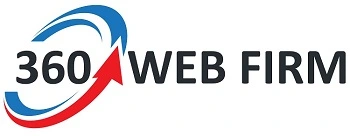
Accessibility And Best Practices For Your Website
SEO, Best Practices and Accessibility Packages
Best practices for your website, errors, broken links and much more. Proper initial SEO for your website, meta tags, keywords and more.
Accessibility is the practice of making your websites usable by as many people as possible. We traditionally think of this as being about people with disabilities.
When websites and web tools are properly designed and coded, people with disabilities can use them. However, currently many sites and tools are developed with accessibility barriers that make them difficult or impossible for some people to use.
Making the web accessible benefits individuals, businesses, and society. International web standards define what is needed for accessibility. This just increases your chances at better sales, better search engines results and all around better service.
WHAT FACTORS COULD BE CONSIDERED BEST PRACTICES?
There are a number of factors that are taken into consideration from search engines that require you to use best practices on your websites. Below is a few of those:
- Select a text that is easy to read.
- Choose a color scheme that suits your brand.
- Use white space to break up text and other elements.
- Make your navigation simple and easy to use.
- Make text simple and short and easy to understand.
- Show using images instead of just telling.
- Allow users to paste in passwords.
WHAT FACTORS COULD BE CONSIDERED FOR ACCESSIBILITY?
Accessibility is the practice of making your websites usable by as many people as possible. Below is a few of those that should be taken into consideration. these could be older people, Compatible with screen readers, people with low bandwidth connections or using older technologies, people with visual impairment:
- Ability to enlarge your website content such as text while using a desktop down to a to a mobile device such as in pinch zoom up to 5x.
- Images with alt tags for people with visual impairment.
- Clear and precise text, not fancy or hard to read text. The most accessible fonts are Tahoma, Calibri, Helvetica, Arial, Verdana, and Times New Roman.
- Compatible with screen readers.
- Images with high resolution.
- No popups or anything that is moving on site that cannot be read or understood.
- Colour scheme used on the website which may be difficult to see buttons and text.
- Links and button names are simple and descriptive to understand.
An accessible created website is key to creating a great user experience for all your site’s visitors. Taking the extra time to make sure you are making your site accessible for everyone, will benefit everyone, including the website owner.

